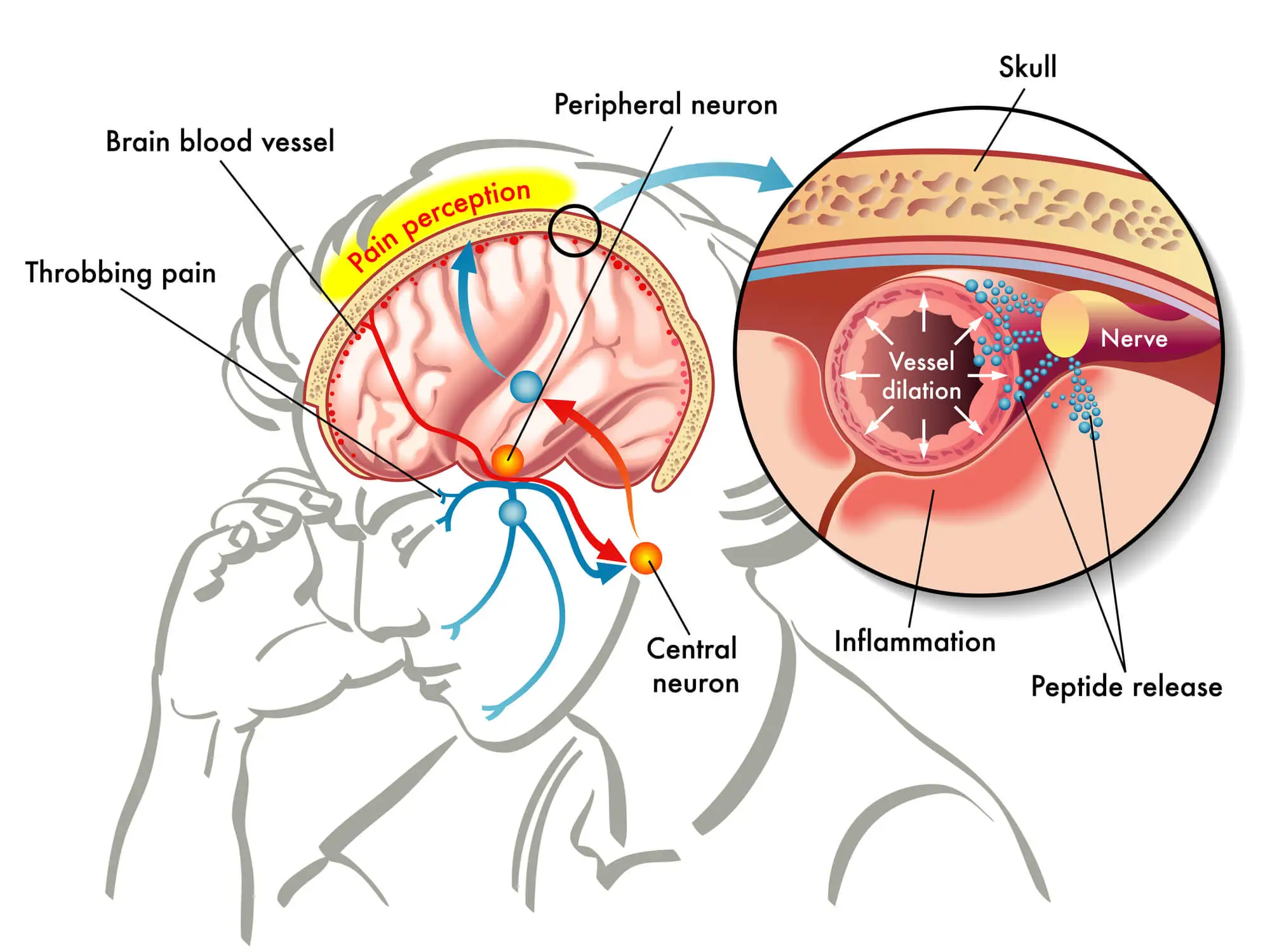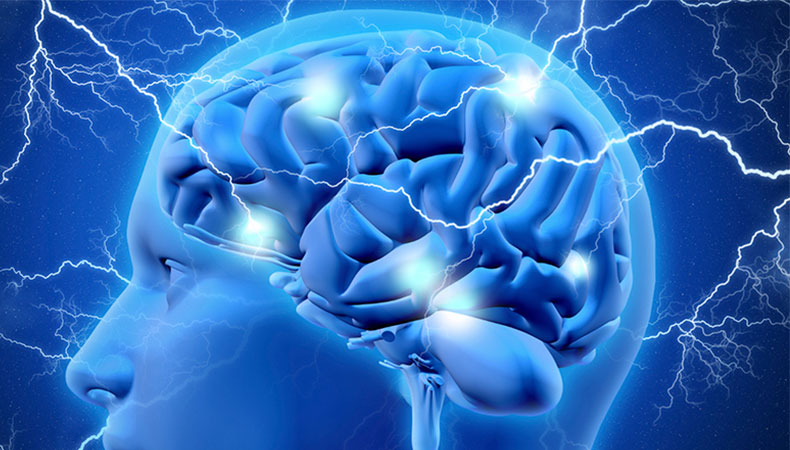Chronic migraines are a serious condition that profoundly impacts all aspects of your life – for days at a time. During a migraine attack, the pain may be so severe that it can force you to stay in a quiet, dark room for hours, influencing your ability to work, participate in social events, and maintain a healthy lifestyle.
But, beyond the pain, the most challenging aspect of living with this condition is that its causes and prognosis are not well understood. This may lead you to live with untreatable pain, often for decades, before finding a treatment option that alleviates the frequency and intensity of your headaches.
Fortunately, recent advances in regenerative medicine are giving patients hope that managing chronic migraines without medications is possible. In this guide by Neuragenex, we’ll explore how Nonfunctional Pain Management can help alleviate the pain and boost your overall health. Let’s get started.
What Are Chronic Migraines?
According to the International Classification of Headache Disorders, migraines are primary headaches. This means that the pain is, in itself, the condition, and does not have another underlying cause, such as an illness or injury.
But migraines are not simply a condition that causes pain in your face and head (orofacial pain): they are a neurological disorder that directly affects the brain. Migraines occur when changes in the chemicals and pathways in the brain cause waves of activity in groups of excitable brain cells.

Because of the nature of this condition, the symptoms that migraines cause go beyond debilitating headaches and facial pain – usually localized in one side of the face. People with chronic migraine also experience nausea, vomiting, sensitivity to stimuli, and a temporary decline in cognitive function.
Migraine affects around 12% of the population and can be either chronic or episodic. Episodic migraine occurs up to 15 times a month, while this condition is considered chronic if you have more than 15 days of headache per month for at least three months. At least 8 of those headache days should include migraine symptoms for your condition to be diagnosed as chronic migraine.
It is estimated that chronic migraine affects 1-2% of the global population, and 2.5% of those with episodic migraine will progress to chronic migraine in their lifetime.
Although migraines are not usually dangerous, they can be a severe condition that disrupts your professional life, sleep, activities, and routine.
Symptoms Of The Condition
The symptoms, triggers, and pattern of migraine pain change over time, which makes it hard for patients to understand their condition. Commonly, a migraine attack will be characterized by throbbing pain on one side of the head, which usually lasts for several days. Other symptoms are nausea, vomiting, and sensitivity to light, sound, and odor.
According to estimations published in 2022, around a third of people with migraine will also experience premonitory signs. These signs occur during the early phases of a migraine attack – known as “prodrome” and “aura” phases – and include abnormal sensations, visual and motor disturbances, impaired speech, and mood swings. These premonitory signs may start up to 24 hours before a migraine, but they don’t necessarily lead to a headache.
Below, we’ll explore the symptoms of chronic migraines.
However, if you experience severe or abnormal symptoms such as vision loss, nosebleeds, shortness of breath, or high fever, you should seek immediate medical care.
Throbbing Pain In The Affected Area Of The Head
One of the most common symptoms of chronic migraine is pain. Painful sensations usually affect one side of the head, grow in the phases before the migraine attack, and can be described as throbbing. In people with migraines, the pain can be so severe as to disrupt sleep, prevent daily activities, and make it impossible to concentrate on a task.
The causes behind migraine pain are not well understood. However, according to a 2023 review, this symptom is believed to be due to multiple factors, including the release of chemicals that narrow the blood vessels in the brain and the prolonged activation of the trigeminal nerve (located on one side of the head), which may lead to inflammation and pain.
Migraine pain can spread through the ears, neck, shoulder, and arms, and can last between 4 and 72 hours.
Nausea And Vomiting
Although not every person with migraines will experience nausea and vomiting, these are prominent symptoms of this condition, occurring in nearly a third of migraine attacks.
The relationship between nausea and migraines isn’t well understood by researchers.
However, studies have shown that this symptom may be due to the fact that migraines cause the activation of brain structures involved with nausea and vomiting.
Vomiting also provides temporary relief to chronic migraine due to the stimulating effect it has on the vagus nerve. Nausea and vomiting remain two of the most bothersome symptoms experienced by those with migraines.
Sensitivity To Light And Sound
As seen above, migraine involves changes in chemical reactions and pathways in the brain. In turn, these changes alter how the brain processes external stimuli such as light, noise, and odors.
So, during a migraine attack, it isn’t uncommon to be temporarily hypersensitive to these stimuli and seek relief by laying in a dark, quiet room.
Cognitive Difficulties
The pain and bodily changes that occur during a migraine attack cause fatigue, tiredness, and sleep disturbances, which can lead to temporary cognitive difficulties. These symptoms are often worsened by nausea, vomiting, and hypersensitivity.
A study conducted in 2022 also shows that migraines are connected to a decline in cognitive abilities, problems with concentration and memory, and a higher risk of developing dementia and psychiatric disorders.
Neck Pain
Estimates show that nearly 90% of people with migraine also suffer from neck pain. This symptom is particularly common among those with chronic migraines and tends to emerge in the prodrome – or “pre-headache” – phase.

Although the link between these two conditions isn’t clear, most people with neck pain and chronic migraine don’t have anatomical issues. So, research concludes that in most cases, neck pain is simply part of the condition, and does not need to be treated separately. Nonetheless, patients are advised to undergo a physical exam to exclude other possible problems.
Cognitive Impairment
Cognitive impairment describes any decline in cognitive abilities, such as memory, language, problem-solving, and attention. Such impairments can be a sign of more serious conditions, such as dementia or Alzheimer's disease, but they can also be the result of...
Sensitivity To Light And Sound
Sensitivity to light and sound can be a strange, uncomfortable condition that often leaves sufferers feeling out of control. It can make it challenging to get through the day, as normal activities become hard to bear, whether it’s going shopping under...
Tiredness, Nausea, and Weakness
If you are struggling with chronic tiredness, weakness, and nausea, you may be battling limitations in all aspects of your everyday life - from reduced productivity at work to pain, discomfort, and low energy levels. And the situation may be made worse by the...
Throbbing Headache Only In Affected Areas
Throbbing pain is a common symptom associated with a range of headache types. It manifests itself as a rhythmic pulsing, beating, or pounding sensation that may affect just a part of the head or the whole head. Throbbing headaches are commonly caused by...
Dull Headache
Although many people will try to treat their dull headaches using over-the-counter (OTC) pain medications, doing so may not offer long-term relief. OTC medications only provide temporary relief from the symptoms and don’t treat the root cause. In addition,...
Fatigue And Irritability
Irritability and fatigue can significantly impact your quality of life by hindering daily activities and provoking distress. While treatment may be complicated, with an accurate diagnosis and early intervention, you can reduce the impact of tension headaches...
Difficulty Focusing
Difficulty focusing or concentrating refers to the inability to maintain attention on a specific task for an extended period. It can manifest in various forms, such as being easily distracted, having trouble staying organized, and feeling overwhelmed by...
Causes Of Chronic Migraines
So far, research has shown that a migraine is more than a headache. However, the root causes of this condition are not well understood. Generally, it is believed that genetic factors, neurological aspects, and medical conditions can make migraines more likely. Some environmental factors can trigger attacks in people diagnosed with chronic migraines.
Let’s look at the common causes and triggers of migraines in more detail below.
Genetic Factors
Genetic factors play a role in 34-64% of migraine cases. In particular, you are twice as likely to develop this condition if a first-degree relative – such as a sibling or parent – has migraines. Women are also three times more likely than men to suffer from migraine.
Medical Conditions
Some medical conditions can impact brain chemicals and make chronic migraine more likely to develop. These disorders include:
- Mental health disorders such as depression and anxiety
- Pain conditions such as fibromyalgia
- Sleep apnoea
- Central nervous system disorders
- Chemical imbalances that affect the nerve pathways
- Postural orthostatic tachycardia syndrome (PoTS)
Environmental Factors
Although environmental factors are rarely the cause of migraine, they are among the most common triggers of attacks in people with chronic and episodic migraine. These factors include:
- Anxiety and stress
- Some foods (especially fermented, pickled, salty, and spicy foods)
- Chemicals found in food (i.e.: MSG)
- Caffeine
- High-sugar drinks
- Poor posture
- Hormonal fluctuations (such as the ones that occur during menopause and the menstrual cycle, or in people using birth control or hormonal medications)
- Medications that affect the blood vessels
- Over-the-counter headache medications when taken regularly
- Sleep abnormalities
- Sensory stimulations, such as flashing lights, strong odors, and loud noises
- Changes in weather, temperature, humidity, and barometric pressure
The factors that trigger a migraine episode are different for each person and can change over time. Nonetheless, learning to recognize your triggers may help you prevent or decrease the intensity of a migraine attack.
Neurological Factors
Some neurological factors that affect how the brain works may lead to migraine. These include changes in the blood flow to the brain, altered brain chemistry, and incorrect nerve signaling.
These neurological changes can occur due to several factors and events, including the following:
- Conditions that cause chronic pain, because of how they alter how your brain processes pain signals
- Irregularities in the shape or size of the blood vessels in the brain
- Brain injury or trauma
- Stroke
- Inflammation of blood vessels in the brain
- Abnormal pressure in the brain or head
- Infections like meningitis
- Brain tumors
Diagnosis Of Chronic Migraines
Since there is no definitive diagnostic test for migraine, this condition remains challenging to diagnose and understand. However, if you have been experiencing the symptoms of chronic migraine, your doctor may use several tests to exclude other conditions and determine the right line of treatment.
These tests include the following:
- Medical History And Physical Examination: A specialist will review your medical history, the symptoms you experience, your daily life, and underlying conditions such as anxiety or depression. You may have to answer questions relating to known migraine triggers, such as whether you consume caffeine or if your headaches occur after you are exposed to certain stimuli (i.e.: bright lights or strong odors).
- Neurological Examination: Neurological exams are often performed by a neurologist and aim to assess the health of your nervous system by testing indicators such as your strength, coordination, and reflexes.
- Imaging Tests: A headache specialist will want to rule out other conditions, such as a stroke. This is done by performing imaging tests of the brain, such as computed tomography (CT) scans and magnetic resonance imaging (MRI) scans.
- Laboratory Tests: Depending on your symptoms and diagnostic challenges, a neurologist may prescribe several medical and laboratory tests including blood tests, eye exams, urine tests, spinal taps, and X-rays of your sinuses.
Conventional Treatment Options
As of today, there is no definitive cure for chronic migraine, and most of the lines of treatment prescribed aim to reduce the intensity and frequency of headache episodes. Here are some of the common approaches used to address chronic migraine:
- Medications: Chronic migraine medications can either be preventive or “rescue” medication, depending on whether you are taking them to prevent an attack or reduce the intensity of a headache episode. Some of the most commonly prescribed medications include over-the-counter pain medications, non-steroidal anti-inflammatory drugs (NSAIDs), anti-seizure medications, Botox injections, triptans, and antidepressants.
- Behavioral Therapies: Behavioral therapies for chronic migraine include relaxation techniques, biofeedback training, cognitive-behavioral therapy, and stress-management training. These therapies strive to help patients deal with known headache triggers, thus preventing migraine episodes from developing. 30-60% of patients using behavioral therapies have reported experiencing fewer and less intense headaches.
- Complementary And Alternative Therapies: Some alternative therapies can help patients address triggers such as high levels of stress. These include acupuncture, massage therapy, meditation, and acupressure. Therapies such as nerve stimulation and transcranial magnetic stimulation (TMS) may also help.
- Lifestyle Changes: The right lifestyle changes that address the triggers of your headaches may decrease the frequency and severity of migraine episodes. Some lifestyle changes to consider include avoiding caffeine, limiting fermented and spicy foods, reducing stress, and improving your posture.
Often, the goal of these lines of treatment is to change the nature of migraine, from chronic to episodic. That’s because episodic headaches are more manageable and less disruptive.
Nonetheless, these lines of treatment are often ineffective and, in the case of medications, can even expose patients to severe side effects, such as an increased risk of stroke, peptic ulcers, mood swings, and heart attack.
Fortunately, patients can now turn to an effective, non-pharmaceutical alternative: Neurofunctional Pain Management®. Let’s discover Neuragenex’s approach in more detail below.
Neurofunctional Pain Management® For Chronic Migraines
Neuragenex’s Neurofunctional Pain Management® aims to help patients improve their quality of life, reduce pain, and address the triggers that may start a migraine episode. Neurofunctional Pain Management programs leverage non-pharmaceutical and regenerative therapies that are fully customized to each patient’s needs and goals.
Some of these approaches include electroanalgesic therapy, IV therapy, and lifestyle counseling. Let’s look at these therapies below.
Electroanalgesia
Electroanalgesia is a pain management technique that uses high-pulse electrical current to ease pain, boost blood circulation, improve mobility, and induce...
Read More About Migraine And Chronic Headaches Electroanalgesia
IV Therapy
IV nutritional therapy, or intravenous therapy, involves administering vital nutrients directly to the bloodstream through an IV. This type of treatment bypasses the digestive system, allowing for maximum absorption and utilization of nutrients by the...
Lifestyle Counseling
Lifestyle counseling is an approach to managing chronic pain that involves identifying, assessing, and modifying lifestyle factors contributing to an individual's pain. For example, lifestyle factors such as nutrition, physical activity, stress, sleep quality...
Read More About Migraine And Chronic Headaches Lifestyle Counseling
Prognosis Of Chronic Migraines
The nature, intensity, and frequency of migraine episodes may change over time. For example, 26% of chronic migraine cases will regress into episodic migraine. Additionally, the incidence of migraine attacks could decrease with aging or after menopause. In some cases, migraine may disappear on its own.
Nonetheless, for the vast majority of patients, migraine is a lifelong condition that can lead to debilitating pain, severe complications, and life-threatening conditions, such as neck disability, constant discomfort, migrainous infarction, and seizures.
Additionally, those battling migraine miss, on average, 4.4 days of work per year and spend a further 11 days with reduced productivity. What’s more, a 2020 study shows that patients with chronic migraine face annual medical costs ranging between $8,500 and $9,500, which significantly contributes to money-related stress and anxiety.
These complications make obtaining an accurate diagnosis and finding the right line of treatment of paramount importance.
Manage Chronic Migraines The Neuragenex Way
If you suffer from chronic migraine, your pain may be defining all aspects of your life. And, following a diagnosis, you may have been recommended to take medications regularly to ease the discomfort.
Fortunately, relying on medications and spending years looking for a treatment that can help are no longer the only options. Thanks to Neuragenex’s Neurofunctional Pain Management, you can boost your quality of life and address your pain without medications or invasive procedures.
Don't suffer in silence. Take control of your chronic migraines and find relief with our expert care and innovative treatments.









